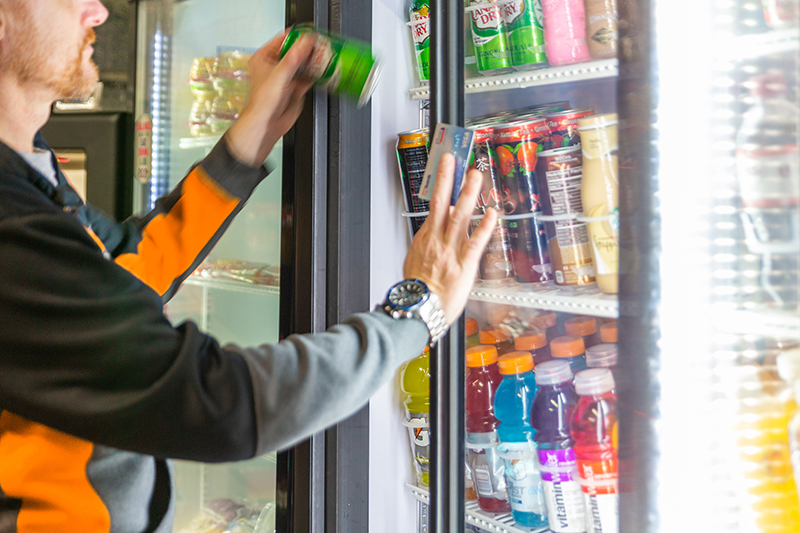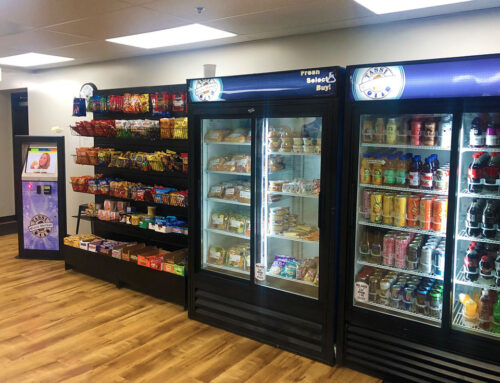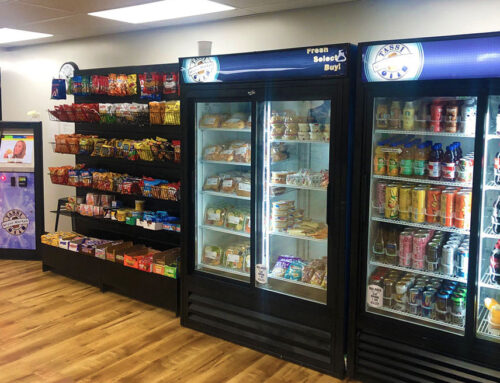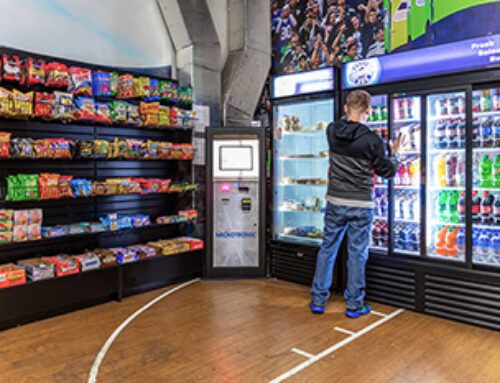The future of micro market vending is likely to be influenced by several key trends and innovations. Micro markets, also known as self-service markets or unattended retail, are small-scale stores that offer a variety of products and snacks to customers in a convenient and accessible way. These markets typically operate with limited or no staff on-site and rely on technology for inventory management and payment processing. Here are some factors shaping the future of micro market vending:
Vending Advancements:
Technology will continue to play a crucial role in the evolution of micro markets. Automated vending machines will become smarter and more sophisticated, with features such as facial recognition for payment, predictive analytics for inventory management, and real-time data monitoring.
Cashless Payments:
The shift toward cashless and contactless payment methods, such as mobile wallets and digital currencies, will accelerate in micro markets. Customers will expect seamless and secure payment options, reducing the need for physical cash handling.
Personalization:
Micro markets will leverage data analytics and artificial intelligence to offer personalized product recommendations to customers. Through the analysis of purchase history and preferences, micro markets can tailor their product offerings to individual tastes.
Focus on Health and Wellness Food Choices:
Consumers are increasingly conscious of their health and well-being. Micro markets will adapt by offering a wider selection of healthier snacks, organic products, and nutritional information. This aligns with the growing demand for healthier choices in vending.
Sustainability:
Environmentally friendly practices will become more important in micro markets. Vendors may adopt sustainable packaging, promote recycling, and reduce food waste through smart inventory management.
Inventory Management:
Internet of Things (IoT) technology will be used to monitor inventory levels, track product freshness, and automate restocking. This will help reduce out-of-stock situations and enhance the overall customer experience.
Micro Market Integration:
Micro markets may become integrated with other retail formats or locations, such as office spaces, gyms, or transportation hubs, to provide added convenience to consumers.
Compliance:
As micro markets expand, they will need to comply with regulations related to food safety, hygiene, and accessibility. Meeting these standards will be essential for long-term success.
Market Expansion:
The concept of micro markets may extend beyond traditional settings. For example, autonomous mobile micro markets on wheels or drones could serve remote or hard-to-reach areas.
Positive Customer Experience:
Creating a seamless and enjoyable customer experience will remain a priority. This includes user-friendly interfaces, responsive customer support through chatbots or remote assistance, and quick issue resolution.
Security:
As micro markets handle sensitive customer data and financial transactions, cybersecurity will be a significant concern. Robust security measures will be essential to protect against data breaches and fraud.
Global Expansion:
Micro markets may expand into new regions and countries, adapting to local preferences and regulations.
The future of micro market vending is likely to be shaped by ongoing technological advancements, changing consumer preferences, and the need for convenience and efficiency. As the market continues to evolve, vendors and operators will need to stay agile and adapt to emerging trends to remain competitive and meet customer expectations.





